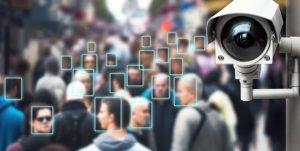News and insights
Facial Recognition Technology: Balancing Ethics and Security
As businesses evolve in an increasingly digital world, the need for advanced security systems has never been more critical.
Author

Bertus Marais
Latest Posts
At I3S, part of the Nexco Group, we pride ourselves on being leaders in Facial Recognition innovation. This cutting-edge technology is transforming how organizations secure their premises, protect assets, and enhance operational efficiency. However, leveraging facial recognition responsibly demands a balance between security needs and the rights of individuals. This blog outlines the importance of facial recognition, how businesses can design and implement it systematically, and the legal considerations every business owner should know.
Why Facial Recognition Matters
Facial recognition systems offer unparalleled accuracy and efficiency in identifying individuals. They can:
Enhance security by restricting access to unauthorized personnel.
Streamline operations through automated attendance tracking.
Improve customer experience by personalizing services for known clients.
However, with great power comes great responsibility. Facial recognition systems must comply with privacy laws and ethical standards, ensuring they are used fairly and transparently.

Legal and Ethical Considerations
Before implementing facial recognition technology, it is essential to understand your legal obligations:
Know Your Rights as a Business Owner: South African businesses have the right to implement security measures, including facial recognition, provided they do not infringe on individual rights.
Data Privacy Compliance: Ensure adherence to the Protection of Personal Information Act (POPIA). Clearly inform individuals that facial recognition is in use and how their data will be handled.
Database Sensitivity: Facial recognition systems often integrate with external databases, such as the South African Police Convicted Criminal Database. This feature requires strict control to prevent misuse or unwarranted profiling. Always obtain proper authorization and ensure compliance with relevant laws.
A Systematic Approach to Designing and Implementing Facial Recognition
Define Objectives: Identify the primary purpose of your facial recognition system. Is it for access control, crime prevention, or customer engagement?
Conduct a Feasibility Study: Assess the physical environment, potential challenges, and required infrastructure, such as cameras and software.
Choose the Right Technology: Partner with a trusted provider like i3S to select hardware and software solutions tailored to your needs. Ensure the technology supports integration with existing systems.
Legal and Ethical Review: Engage legal experts to draft policies and ensure your system complies with POPIA and other relevant laws. Clearly communicate the scope of data collection and usage.
Installation and Testing: Deploy the system in stages, starting with pilot testing in controlled environments. Evaluate accuracy, speed, and reliability.
Training and Awareness: Train staff to use the system effectively and responsibly. Educate employees and visitors about the system’s purpose and functionality.
Continuous Monitoring and Maintenance: Regularly update software and conduct audits to ensure the system remains secure and effective. Address any issues promptly.

Why Choose I3S?
As a leader in Facial Recognition innovation, I3S combines technical expertise with a commitment to ethical practices. Our solutions are designed to empower businesses while safeguarding individual rights. Being part of the Nexco Group, we leverage cross-industry expertise to provide holistic security solutions tailored to your unique needs.
Partner with I3S for a Safer Future
Facial recognition technology represents a leap forward in security and operational efficiency. By partnering with i3S, you can navigate the complexities of implementation with confidence, ensuring compliance, transparency, and excellence. Contact us today to learn more about how we can help secure your business and drive innovation.



